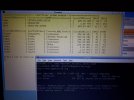Hi All,
As per subject title - I didn't realise it would start going through all the folders, so my fault! Is there something that can be used to undelete the files? Read about https://itsfoss.com/recover-deleted-files-linux/ (testdisk). Would I need this or is there something already on the Humax if you have the custom firmware installed?
I didn't do too much damage - stopped it pretty quick but just want to get back the few music files I deleted.
secondary question - how do you remove a symlink you've just created? the option -f sounded like it would remove all active symlinks
Thanks
Rodp
As per subject title - I didn't realise it would start going through all the folders, so my fault! Is there something that can be used to undelete the files? Read about https://itsfoss.com/recover-deleted-files-linux/ (testdisk). Would I need this or is there something already on the Humax if you have the custom firmware installed?
I didn't do too much damage - stopped it pretty quick but just want to get back the few music files I deleted.
secondary question - how do you remove a symlink you've just created? the option -f sounded like it would remove all active symlinks
Thanks
Rodp

